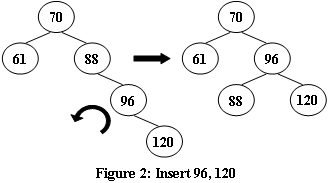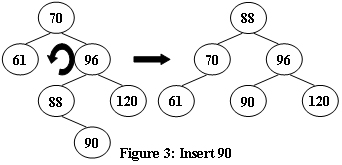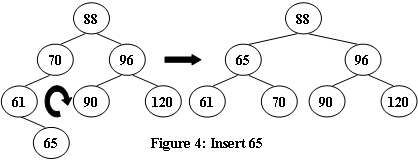An AVL tree is a self-balancing binary search tree. In an AVL tree, the heights of the two child subtrees of any node differ by at most one; if at any time they differ by more than one, rebalancing is done to restore this property. Figures 1-4 illustrate the rotation rules.
|
|  |
|---|---|
 |
 |
Now given a sequence of insertions, you are supposed to output the level-order traversal sequence of the resulting AVL tree, and to tell if it is a complete binary tree.
Each input file contains one test case. For each case, the first line contains a positive integer N (≤ 20). Then N distinct integer keys are given in the next line. All the numbers in a line are separated by a space.
For each test case, insert the keys one by one into an initially empty AVL tree. Then first print in a line the level-order traversal sequence of the resulting AVL tree. All the numbers in a line must be separated by a space, and there must be no extra space at the end of the line. Then in the next line, print YES if the tree is complete, or NO if not.
5
88 70 61 63 65
70 63 88 61 65
YES
8
88 70 61 96 120 90 65 68
88 65 96 61 70 90 120 68
NO
题意:
根据给出的插入序列构建一棵AVL Tree,然后按照层次遍历输出。
思路:
1.构建AVL Tree时插入结点会遇到四种情况。
|
右旋:
|
左旋:
|
|---|---|
|
先右旋后左旋:
|
先左旋后右旋:
|
求某一个结点的左右孩子深度时,可以用递归函数求解。最后判断是不是完全二叉树,可以先记录第一个缺失孩子的节点,如果该节点后又出现了有孩子的节点则,不是完全二叉树。
1123 Is It a Complete AVL Tree
原文:https://www.cnblogs.com/ruruozhenhao/p/12759911.html